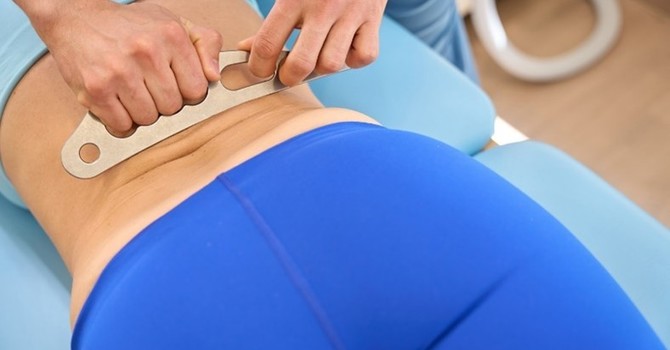
Benefits of Physiotherapy for Sports Injuries
Sports injuries are common among both athletes and individuals who engage in physical activities. Properly managing these injuries is essential to ensure a safe and effective recovery. Physiotherapy plays a crucial role in rehabilitation by helping individuals regain mobility, strength, and function. At Clayton Heights Sports & Therapy Center, our team of sports physiotherapists in Surrey provides targeted treatments to assist in injury recovery and prevent future complications.
Call us today for more information.
How Can Sports Physiotherapists Help in Injury Recovery?
Sports physiotherapists play a vital role in diagnosing, treating, and preventing sports-related injuries. Their expertise allows them to develop tailored rehabilitation programs that address each patient's unique needs. Some of the key ways in which sports physiotherapists surrey aid in injury recovery include:
Accurate Diagnosis and Assessment A thorough assessment is essential to determine the severity of an injury. Sports physiotherapists use clinical evaluations and diagnostic tools to identify the underlying issues. This step ensures that the treatment plan is appropriate for the specific injury. By understanding the root cause of the injury, they can provide a structured rehabilitation approach that promotes long-term recovery and reduces the likelihood of re-injury.
Pain Management Physiotherapy interventions, such as manual therapy and modalities like ultrasound and electrical stimulation, help manage pain and inflammation. These techniques reduce discomfort and promote faster healing without the need for excessive medication use. Pain management is crucial, as chronic pain can lead to compensatory movement patterns that may result in further injuries. Additionally, education on pain management techniques, such as relaxation exercises and breathing techniques, can empower patients to take an active role in their recovery.
Restoring Mobility and Strength Following an injury, restricted movement and muscle weakness are common concerns. Physiotherapists implement exercises that improve flexibility, joint mobility, and muscular strength, allowing individuals to return to normal activities safely. Strengthening weakened muscles and restoring movement patterns help individuals regain full functionality without experiencing long-term limitations.
Rehabilitation Programs A structured rehabilitation program is critical for recovery. Sports physiotherapists design progressive exercise routines to enhance movement patterns and prevent re-injury. These programs are tailored to the individual's condition and sport-specific requirements. Rehabilitation programs often include progressive loading, balance training, and sport-specific drills to ensure a seamless transition back to competitive activities. Compliance with the rehabilitation program is essential to achieving the best outcomes.
Injury Prevention Strategies Beyond recovery, physiotherapists provide education on proper techniques, posture correction, and injury prevention exercises. These strategies help athletes and active individuals reduce the risk of future injuries. Preventative measures include strength training, flexibility exercises, and biomechanical analysis to identify potential weaknesses that may predispose an individual to injuries. Understanding how to warm up and cool down effectively prevents strains and sprains.
Return-to-Play Guidance A gradual return to physical activity is necessary to prevent setbacks. Sports physiotherapists assess athletes' readiness and provide guidelines for a safe transition back to training and competition. This involves sport-specific testing, functional movement assessments, and controlled exposure to training activities to ensure the individual is fully prepared to resume participation without compromising their recovery.
What Are the Best Physiotherapy Techniques for Sports Injuries?
Physiotherapists use a variety of techniques to treat sports injuries effectively. The selection of techniques depends on the nature and severity of the injury. Some of the most effective physiotherapy methods include:
● Manual therapy: Manual therapy involves hands-on techniques such as joint mobilization, soft tissue manipulation, and myofascial release. These approaches improve blood circulation, alleviate muscle tightness, and restore movement in affected areas. Manual therapy facilitates optimal movement patterns by reducing restrictions in soft tissues and joints, allowing for a smoother recovery process.
● Therapeutic exercises: Exercise therapy is fundamental in physiotherapy treatment plans. Strengthening and stretching exercises help rebuild muscle function, improve flexibility, and enhance stability. These exercises are tailored to each individual's recovery stage and physical capabilities. A combination of resistance training, bodyweight exercises, and mobility drills ensures a well-rounded approach to recovery.
● Electrotherapy: Electrotherapy techniques, including ultrasound therapy, transcutaneous electrical nerve stimulation (TENS), and electrical muscle stimulation (EMS), aid in pain relief, reduce inflammation and promote tissue healing. These modalities can be part of a comprehensive rehabilitation plan to accelerate recovery and enhance muscle activation.
● Taping and bracing: Kinesiology taping and bracing provide support to injured muscles and joints. These methods reduce strain on the affected area and assist in maintaining proper alignment during movement. Taping techniques can also facilitate proprioception, which helps individuals maintain stability and prevent further injuries during rehabilitation exercises.
● Cold and heat therapy: Applying cold therapy (cryotherapy) helps reduce swelling and numbs pain immediately after an injury. On the other hand, heat therapy increases blood flow to the injured area, relaxes muscles, and promotes healing. Alternating between cold and heat treatment, known as contrast therapy, can further enhance circulation and accelerate healing.
● Dry needling and acupuncture: Dry needling and acupuncture techniques target muscle trigger points to relieve pain, reduce muscle tension, and improve circulation. These methods are particularly effective for managing chronic pain and muscle tightness. Dry needling, in particular, can help release deep-seated muscular knots that may contribute to discomfort and restricted movement.
● Proprioceptive training: Proprioceptive training focuses on balance and coordination exercises that help retrain the body's awareness of movement. This technique is beneficial for preventing recurrent ankle sprains and knee injuries. Balance exercises on unstable surfaces, such as balance boards and foam pads, challenge the neuromuscular system and improve an individual's ability to stabilize joints effectively. Click here to learn about physiotherapy regulations and resources.
● Hydrotherapy: Water-based exercises reduce the impact on joints and muscles, allowing patients to perform rehabilitation movements with minimal strain. Hydrotherapy is beneficial for individuals recovering from lower limb injuries. The buoyancy of water reduces pressure on weight-bearing joints, making it an excellent rehabilitation option for conditions such as ligament injuries and post-surgical recovery.
● Sport-specific training: Sport-specific training involves exercises designed to mimic the movements required for an individual's sport. This helps athletes regain confidence in their abilities and ensures they are physically prepared to return to competition. By incorporating drills that simulate real-game scenarios, physiotherapists help athletes rebuild endurance, strength, and agility.
Start Your Recovery with Professional Sports Physiotherapy
At Clayton Heights Sports & Therapy Center, our team strives to provide comprehensive physiotherapy care tailored to each patient's recovery needs. By integrating proven physiotherapy techniques, we aim to facilitate a safe return to sports and physical activities while minimizing the risk of future injuries. Contact us today.





